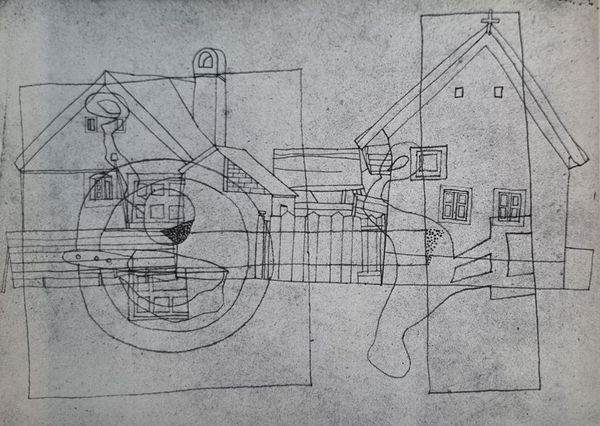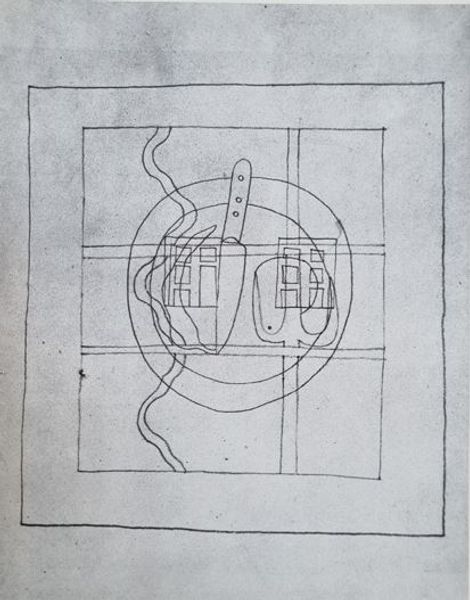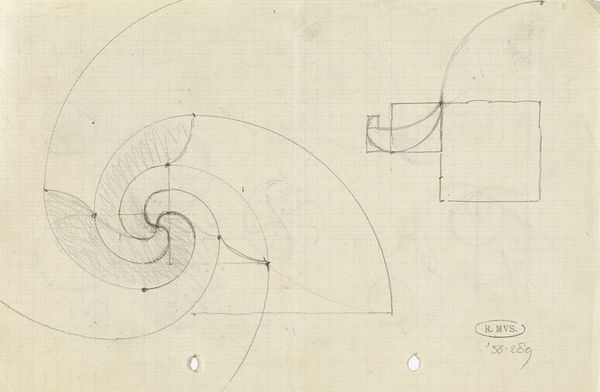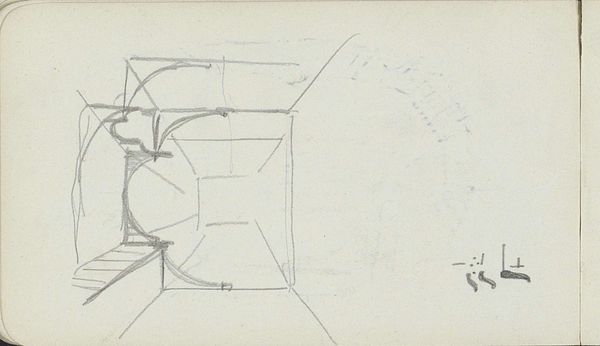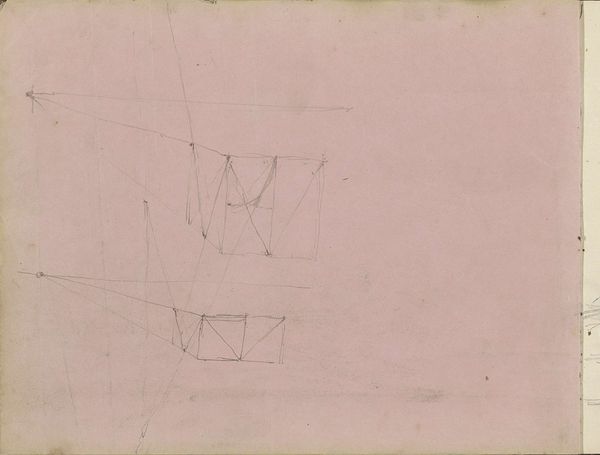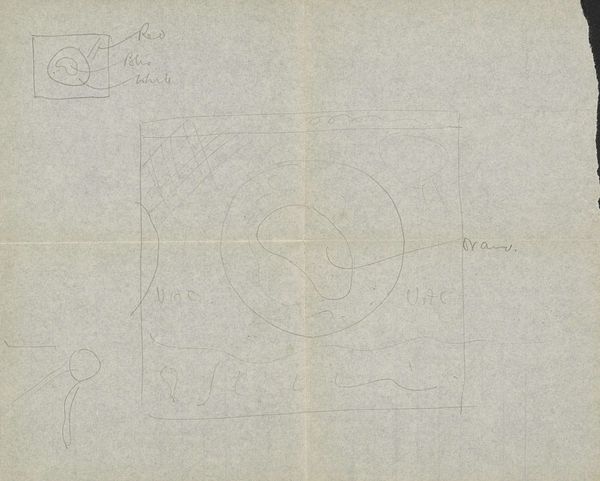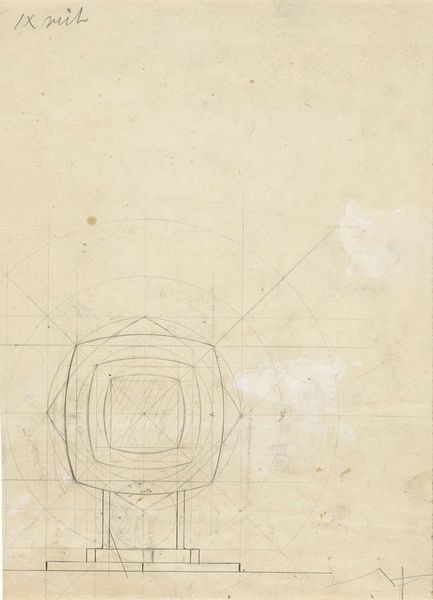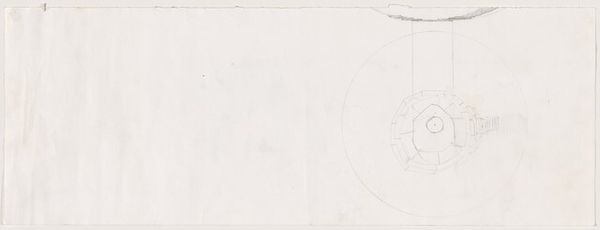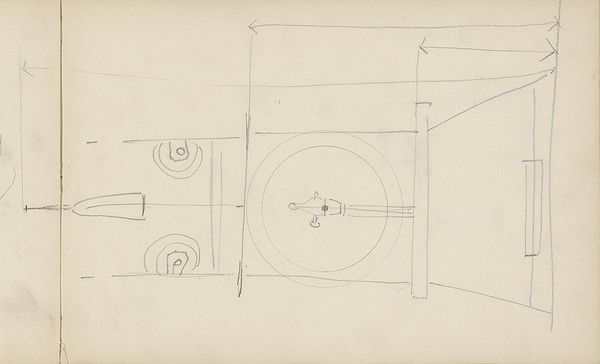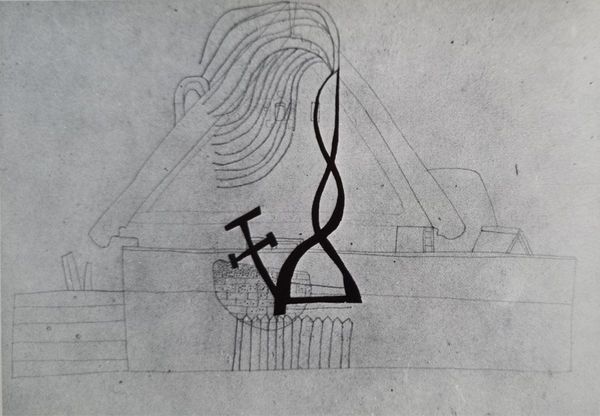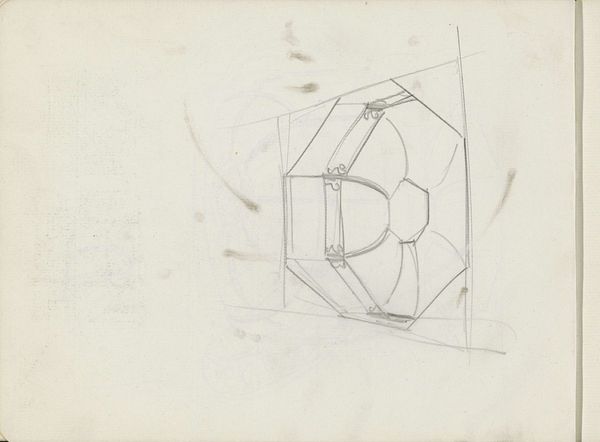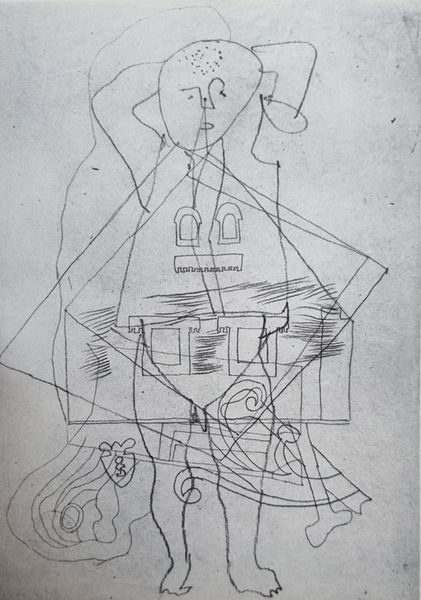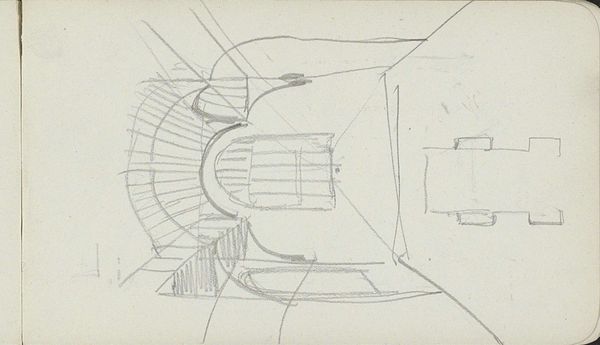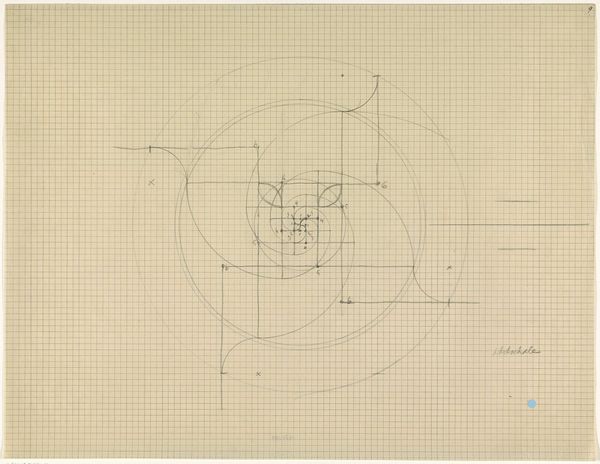
drawing, ink
#
drawing
#
amateur sketch
#
light pencil work
#
sketched
#
incomplete sketchy
#
hand drawn type
#
constructivism
#
personal sketchbook
#
ink
#
geometric
#
rough sketch
#
abstraction
#
sketchbook drawing
#
sketchbook art
#
initial sketch
Copyright: Public domain
Vajda Lajos created ‘Kapu Tányéros Csendélet’ in 1936, using ink to conjure a world of geometric abstraction. The composition is dominated by an array of shapes—circles, squares, triangles—all rendered in stark lines against a muted background, lending the piece a complex, almost architectural feel. The artist has deftly layered these forms, inviting us to decode their spatial relationships, the interplay hints at semiotics and poststructuralism. This use of overlapping shapes challenges conventional notions of space and perspective, thus creating visual tension and a dynamic interplay between form and content. Notice how Lajos uses the formal structure of the artwork to challenge fixed meanings, compelling us to engage with new ways of thinking about representation and reality. The interplay between geometric precision and semiotic ambiguity invites us to see art as a space for questioning established categories and values.
Comments
No comments
Be the first to comment and join the conversation on the ultimate creative platform.
